Grand Vitara, the name which has a lot of history attached to it, makes a comeback to the market. We are seeing this machine after almost a decade and with its launch it has ended months of speculation.
India’s favourite car maker, Maruti Suzuki, has been leading multiple segments in India to date. With an eye on dominating the mid-size SUV segment, it has launched the new Grand Vitara. This vehicle is built on Suzuki’s Global-C platform, which is also used in the Vitara Brezza, Ciaz and S-Cross. It has also been employed in the recently launched international S-Cross. Maruti Suzuki has upped the game and given it tinge of spice to suit Indian tastes.
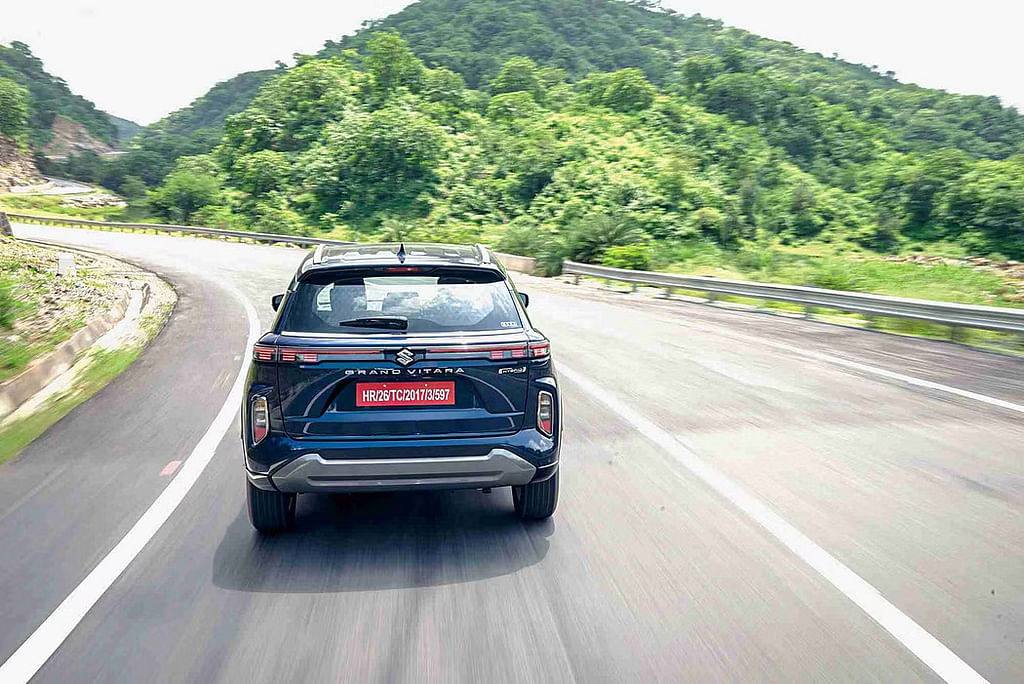
Unlike the badge-engineered cars like Baleno-Glanza and Vitara Brezza-Urban Cruiser. This midsize SUV is co-developed by Toyota and Maruti Suzuki.
Toyota's Hyryder and Grand Vitara share the same platform and both are powered by Suzuki’s Dual-Jet K15C series engine. The hybrid is sourced from Toyota.
To drive the new Grand Vitara, we headed to Udaipur in Rajasthan. There we experienced every drivetrain option available.

Styling
The Grand Vitara is longer and wider than the Brezza. Its wheelbase is 100mm longer, making it 2,600mm. This translates into increased interior space.
The Grand Vitara has a bold and contemporary design. The nose’s frame gets a chrome finish, which is complemented by a contrasting black front grille and silver skid plate. The DRL occupies the top of the bumper and the headlights are moved lower, thus eliminating fog lamps. The large grille sits in-between the headlamps up front and body cladding, for a beefy look.
From the side profile you see a longish frontal overhang. The 17-inch wheels are handsome and fill the wheel arches well. The shape of the wheel arches and the 2600 mm wheelbase is similar to the international model. The bodywork designed in India lends it a more SUV-like form and gives it marginally larger dimensions. Which makes the Grand Vitara and its platform sibling Toyota Hyryder, two of the largest cars in the segment.
When viewed from the rear, the taillights remind you of a few premium cars. This is tastefully blended with the Grand Vitara badge, making it look even more premium. The imposing front and rear design, wide stance with the 17-inch wheels, and particularly the wide fender and bumper design make the Grand Vitara impressive.
Interiors
The cabin has immediately recognisable Maruti Suzuki elements. You will notice it first with the switches and steering wheel.
The top section of the multilayer dashboard uses hard plastic, while the middle section is a leather finish panel with metal finish accents.
The Smart Hybrid sports dual black-Bordeaux interiors with silver finish accents, while the strong hybrid has an all-black cabin with champagne gold accents and diamond stitch leatherette seat covers.
The seating posture feels SUV-like. The side thigh support should be bigger, as it is small for an average sized person. Ingress and egress for kids and older passengers is easy.
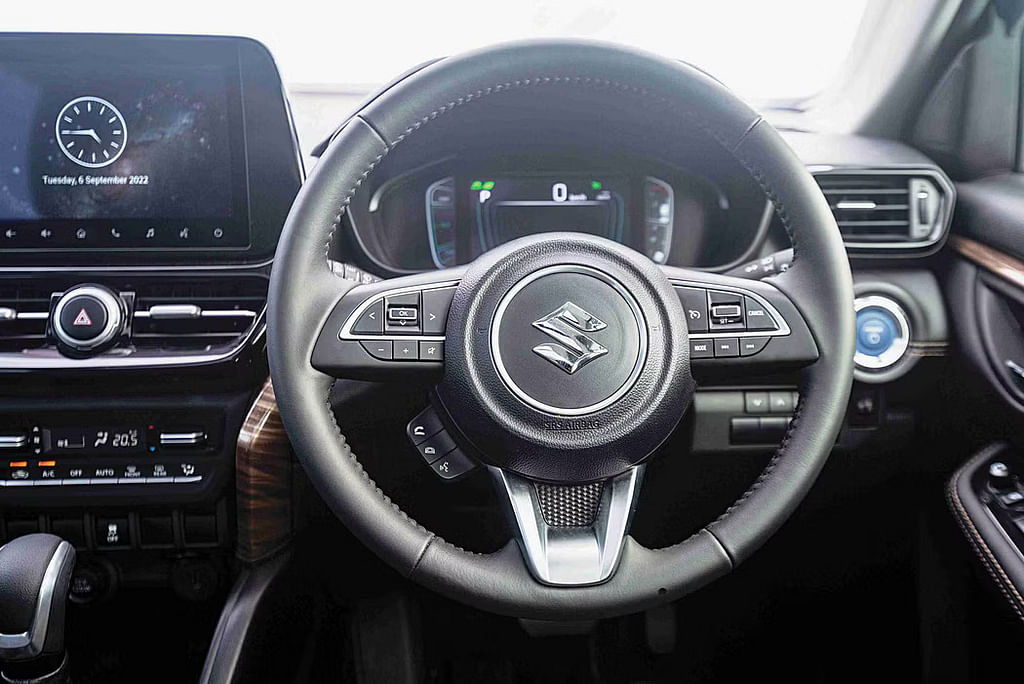
The rear seats get a slightly more reclined position, even then are relatively upright and comfortable. It feels good in terms of comfort. Headroom on the other hand is a concern, even for an average-height person. It feels inadequate, which is more pronounced in the top variant, which has a big panoramic sunroof and its liner sits lower.
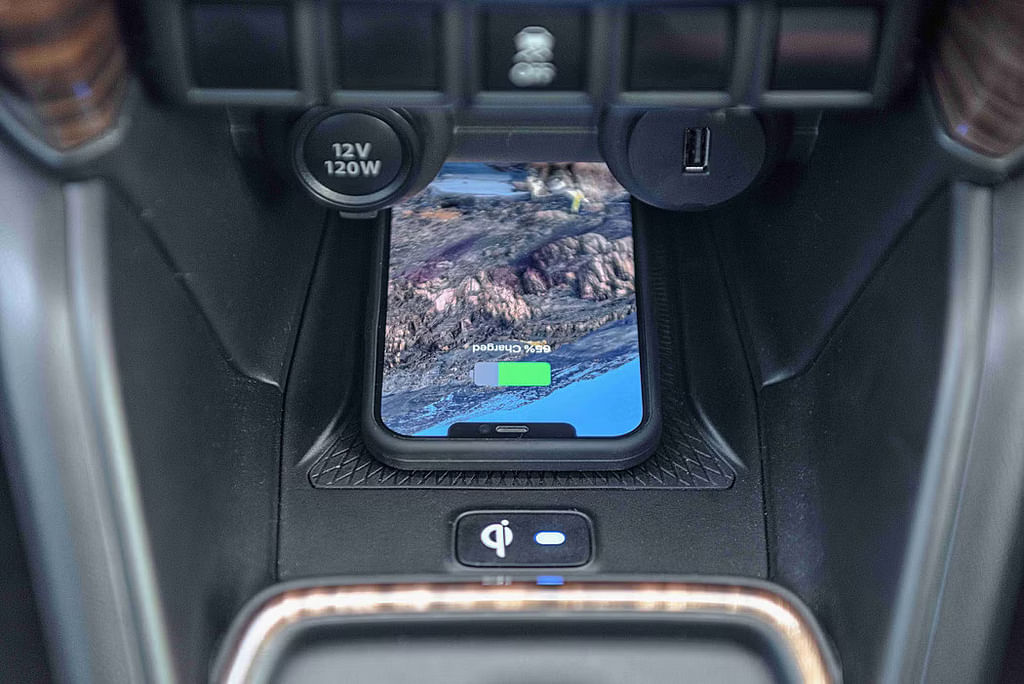
The nine-inch audio system gets wireless Apple CarPlay and Android Auto capabilities.
The infotainment system feels plush, as do the buttons and controls on the dash.
For the first time, Maruti is offering a big panoramic sunroof, which elevates the overall experience. The sunroof cloth could have been better and it feels like it's going to start sagging in a few months.
The top end gets a fully digital instrument cluster and a heads-up display. Grand Vitara gets front ventilated seats, but it is quite noisy and the power feels inadequate. It is also equipped with a 360-degree camera.

A prominent concern for many buyers will be the boot space. It is only 373 litres for the mild hybrid variants, which is comparable to sub-four-meter crossovers.
The strong hybrid variant gets just 265 litres. To put that in perspective, it is less than a Baleno. This is because, in most ICE-derived hybrids, the battery pack is placed behind the rear seat. Which reduces the boot space.
In the strong hybrid, the spare wheel is placed beneath the car. While in the smart hybrid it goes inside the boot.
Engine and Power Options
The consumer is spoilt for choice, when choosing a preferred powertrain option.
You have to tick boxes between, ICE power, 2-wheel drive, all-wheel drive, mild hybrid and strong hybrid. Basically, everything other than a diesel power plant.
This new machine is available in two configuration of 1.5 litre engine blocks. This engine is mated to multiple transmission options, and its the first vehicle in its category to sport an AWD system as well as hybrid technology.
Starting with the strong hybrid, which the company calls an 'Intelligent Electric Hybrid'.
This variant is sourced from Toyota, it is a 92 hp, 1.5 litre, 3-cylinder Atkinson cycle petrol engine, paired with an electric motor, which puts out 79 hp and 141 Nm of torque.
Together the unit produces 115 hp, which is paired to an e-CVT gearbox. Maruti claims that this combination will give 27.97 kmpl.
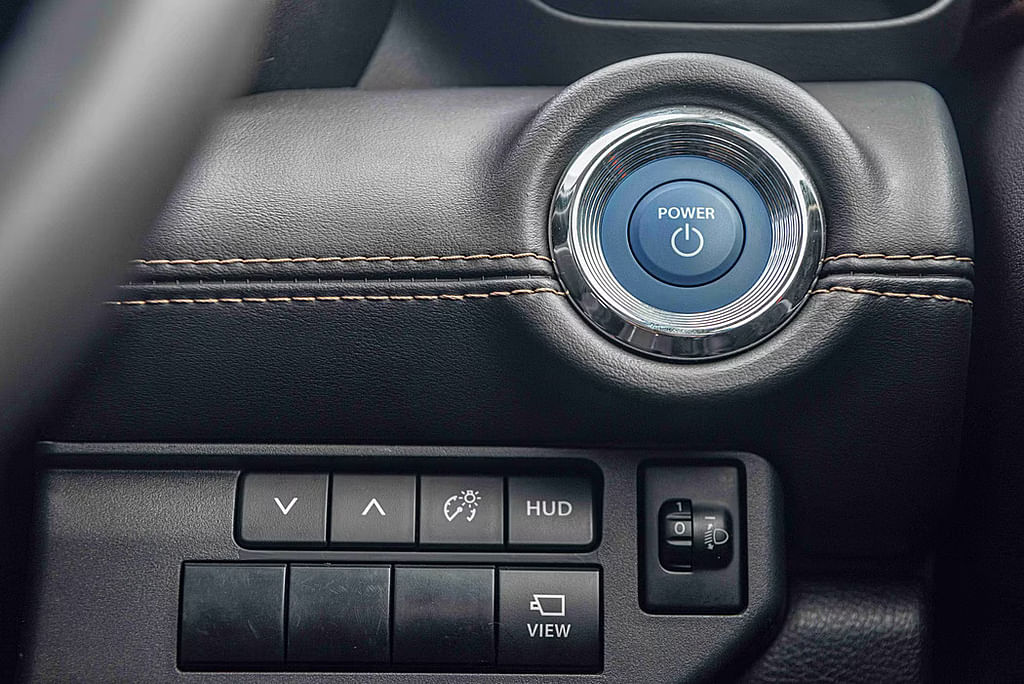
Press down on the blue start/stop button, to see the engine noiselessly come to life. If there is enough juice in the batteries, then the vehicle will set off on electric energy.
At low speeds, it stays in electric mode, and when you drive around like this, it feels futuristic.
The company claims that you can drive around in EV mode for 30-40 percent of the time.
The intelligent system used by the car, ensures you get sufficient power from the battery or the engine or a combination of both. The power delivery is seamless, irrespective of the road conditions or terrain you are driving through.
On paper, the output of this vehicle feels inadequate at just 115 bhp. But once behind the wheel, the driving experience and performance is impressive.
You can also lock the vehicle in EV mode, so it will remain with electric power only for as long as possible.
The eCVT transmission seamlessly changes driving modes from electric to hybrid to petrol engine only. All of this based on the driver's throttle input.
The Grand Vitara is also equipped with regenerative braking, which helps charge the battery.
You get three driving modes, Sport, Normal and Eco. The first makes the Grand Vitara considerably more fun to drive. The other two are difficult to tell apart!
To enjoy the drive in the Grand Vitara, you should drive it in a sedate manner. You want to keep the engine spinning between 2000 to 3000 RPM, irrespective of whether you are in the city or on the highway.
Quick overtaking manoeuvres, more often than not, will require you to downshift. This is true for both city and highway driving.
A filled up car, will see you need to work the gearbox with the paddle shifters. The gearbox which isn't the fastest, waits for the engine to drop out of the powerband before downshifting.
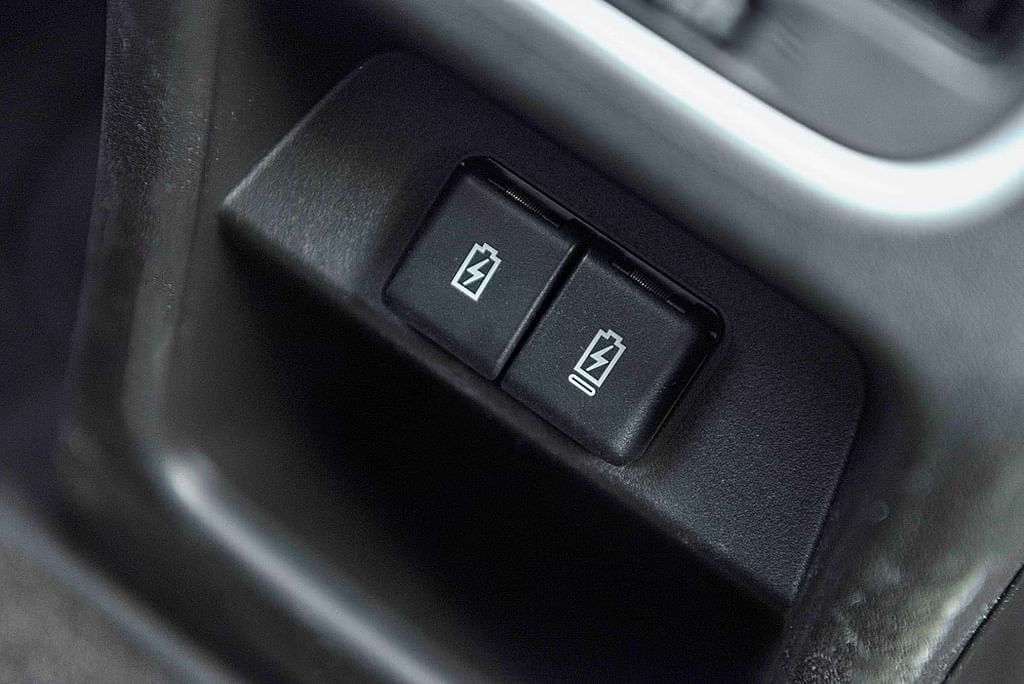
The Grand Vitara offers a supple ride to its passengers. Which is perfect for Indian road conditions.
A qualifier is, that you need to be gentle with the throttle and steering. This is not a vehicle built to be thrown through a fast corner. It is built for a sedate and comfortable ride experience.
Excessive enthusiasm by the driver, will see a fair amount of vertical movement from the suspension. Upsetting the vehicle dynamics.
Choose the Grand Vitara for excellent ride quality and comfort over bad roads.
Taking the Grand Vitara for a mild bit of off-roading was fun. But we took the AWD version which features the K15C engine along with a mild hybrid system and a 5-speed manual transmission.
The AWD sends power to the rear wheels, only when it detects the front wheels slipping. Once you understand the system, you can get the car through quite some rough stuff.
We drove through a tailor-made off-road section, where it easily tackled slush, inclines and hill hold function.
The hill descent function worked well while driving down steep slopes. It fixes the speed to 10 kmph, so you are in complete control.
The Grand Vitara tackled the 25-degree approach and departure angles with absolute ease.
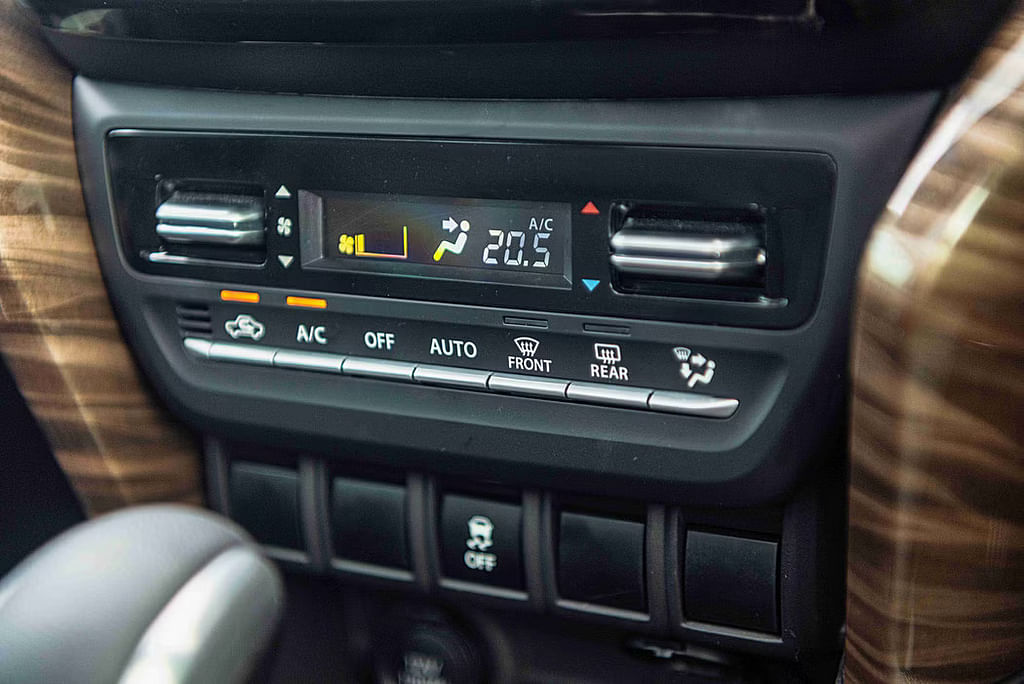
The strong hybrid system uses a small 0.76kWh lithium-ion battery, which is lighter and pushes out instantaneous power.
The small batteries also mean that the strong hybrid is only 80-85 kilos heavier than the mild hybrid two-wheel drive variant.
The braking felt consistent and predictable across all the variants and the strong hybrid also gets a dedicated B mode for stronger braking assistance.
Though the strong hybrid belongs to Toyota, all the tuning for the mild hybrid, strong hybrid and even the suspension and brakes is completely done by Maruti Suzuki and Toyota's job here is simply to manufacture both the Grand Vitara and the Toyota Hyryder at its plant near Bangalore.
Grand Vitara has a long feature list too, which includes a 360-degree camera, wireless charger, ambient lighting, connected car tech, ESP, hill-hold assist, tyre pressure monitoring system, and six airbags. The Maruti Suzuki Grand Vitara and Toyota Hyryder will be pitched directly against a competitive crop of midsize SUVs such as Hyundai Creta, Kia Seltos, MG Astor, VW Taigun and Skoda Kushaq. The price of Grand Vitara ranges from Rs 10.45 lakh-19.65 lakh (ex-showroom, Delhi). The strong hybrid variants cost Rs 50,000 more than the Hyryder's. This is because each brand has taken a price advantage of its tech.
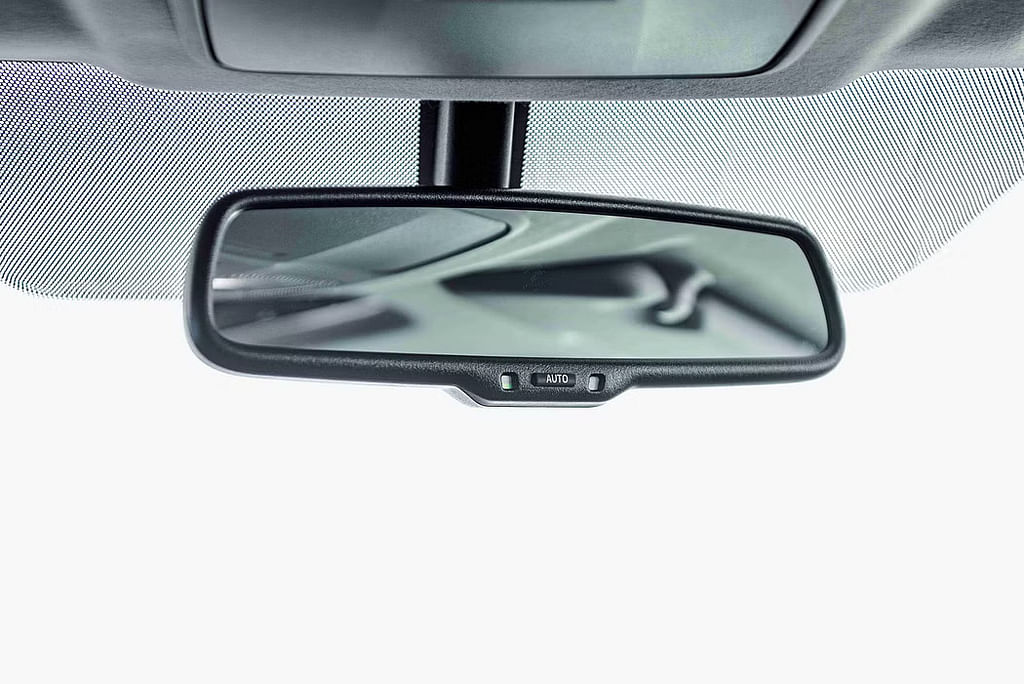
The powertrain options feel adequate, without being enthusiastic. The vehicle is refined and aptly tuned for Indian driving conditions. The strong hybrid makes a strong case for itself. If you are going for a strong hybrid version, Hyryder makes sense and if you want a sportier look and wider service network Grand Vitara is the option to go for.
from Latest news https://ift.tt/7VQMh1N



0 Comments